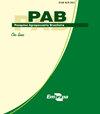利用rep-PCR和VNTR分子标记分析相黄单胞菌的遗传多样性
IF 0.7
4区 农林科学
Q3 AGRICULTURE, MULTIDISCIPLINARY
引用次数: 0
摘要
摘要采用BOX-PCR、ERIC-PCR和可变数目串联重复序列(VNTR)标记,对巴西5个木薯产地8个群体的相黄单胞菌(Xanthomonas phaseoli p . v. manihotis, Xpm)进行遗传多样性分析。在8个城市收集了具有木薯细菌性枯萎病症状的木薯叶片,用这些菌株的特异性引物扩增鉴定了Xpm分离株。采用BOX-PCR、ERIC-PCR和VNTR标记对Xpm分离株进行鉴定。观察到的选择压力,加上繁殖模式和增加遗传变异的机制,使病原体种群能够根据小气候的变化进行适应,从而有助于差异化的繁殖成功。ERIC-PCR和VNTRs是评价所研究的8个Xpm群体遗传变异的最佳标记。而ERIC-PCR是用群体区分群体效果最好的标记,且同一群体的分离物具有较高的相似性。研究Xpm的遗传多样性是提高木薯病害监测和管理策略的关键。本文章由计算机程序翻译,如有差异,请以英文原文为准。
Genetic diversity of Xanthomonas phaseoli p v. manihotis populations using rep-PCR and VNTR molecular markers
Abstract The objective of this work was to evaluate the genetic diversity of Xanthomonas phaseoli p v. manihotis (Xpm) from eight populations from five cassava producing states in Brazil, through the rep-PCR (BOX-PCR and ERIC-PCR) and variable number of tandem repeat (VNTR) markers. Cassava leaves with symptoms of cassava bacterial blight were collected in eight municipalities, and the Xpm isolates were identified by amplification with primers specific for these isolates. The identity of the Xpm isolates was confirmed with the BOX-PCR, ERIC-PCR, and VNTR markers. The observed selection pressure, together with the mode of reproduction and the mechanisms that increase genetic variability, allows of the pathogen populations to adapt according to microclimate variation, contributing to a differentiated reproductive success. ERIC-PCR and VNTRs are the best markers for evaluating the genetic variability in the eight studied Xpm populations. However, ERIC-PCR is the marker that best separated the groups by population and presented a higher similarity between the isolates of the same population. The study of the genetic diversity of Xpm is key to improve disease monitoring and management strategies in cassava crops.
求助全文
通过发布文献求助,成功后即可免费获取论文全文。
去求助
来源期刊

Pesquisa Agropecuaria Brasileira
农林科学-农业综合
CiteScore
1.20
自引率
0.00%
发文量
45
审稿时长
9-18 weeks
期刊介绍:
Pesquisa Agropecuária Brasileira – PAB – is issued monthly by Empresa Brasileira de Pesquisa Agropecuária – EMBRAPA, affiliated to Ministry of Agriculture, Livestock and Food Supply. PAB publishes original scientific-technological articles on Plant Physiology, Plant Pathology, Crop Science, Genetics, Soil Science, Food Technology and Animal Science.
Its abbreviated title is Pesq. agropec. bras., and it should be used in bibliographies, footnotes, references and bibliographic strips.
 求助内容:
求助内容: 应助结果提醒方式:
应助结果提醒方式:


